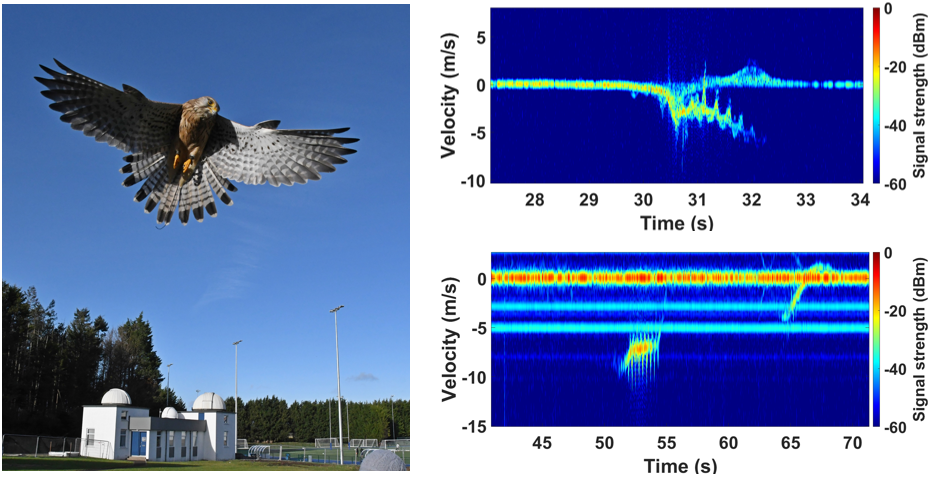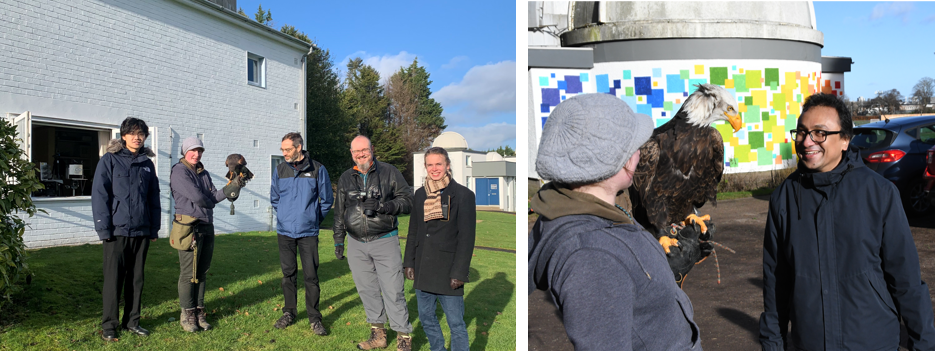Falconry trial gathers triple frequency radar data of birds

The James Gregory Telescope building which houses the Millimetre Wave Group’s radar lab during the trial (left). Inside view of the radar lab, showing Theseus, Blunderbuss, and T-220 radars (right).
The Millimetre Wave Group recently conducted a trial to acquire a large dataset of radar measurements of birds in flight. The trial, held at the group’s radar lab and outdoor test range at the University of St Andrews observatory, used three of our in-house developed radar systems: Blunderbuss, T-220 & Theseus to gather data at frequencies of 24 GHz, 94 GHz and 207 GHz respectively. We collected data from six birds provided by Elite Falconry with a variety of wingspan and size: Bald Eagle, Kestrel, Harris Hawk, Tawny Owl, Striated Caracara, and Red-backed Buzzard.
The trial which is supported by MathWorks, the company behind the widely used MATLAB data processing software, will enable the creation of a diverse, labelled dataset of radar signatures of six types of bird of different sizes, at three radar frequencies, flying a variety of flight paths. The dataset, which eventually will made public, can then be used to build, train and verify classification tools to discriminate birds, drones and other targets. Currently, there is a lack of experimental data for different birds at these radar frequencies on which to train classification algorithms.

Photo of a Kestrel in flight, performing a slow hover during the trial (left). Figure showing a spectrogram of the Kestrel taking off from a perch captured by T-220 (upper right). Figure showing a spectrogram of the Kestrel hovering with data from BB24 (lower right).
The ability to discern birds from drones is a key step in being able to use radar to ensure the safety of locations such as airports from the potential threat posed by the misuse of drones. The wing flaps of birds and the rotation of drone propellers impart characteristic ‘micro-Doppler’ signatures in radar measurements which can be classified using machine learning methods. When processed as velocity-time spectrograms, image-based classifiers based on neural networks can be used which offer very high performance. A subsequent trial to collect data from a diversity of drones is planned.

Members of the Millimetre Wave group getting to meet the birds from Elite Falconry close up.
Fascinating read. The use of triple-frequency radar to gather data on birds during the falconry trial is truly innovative. Thanks for sharing these exciting insights into cutting-edge research!